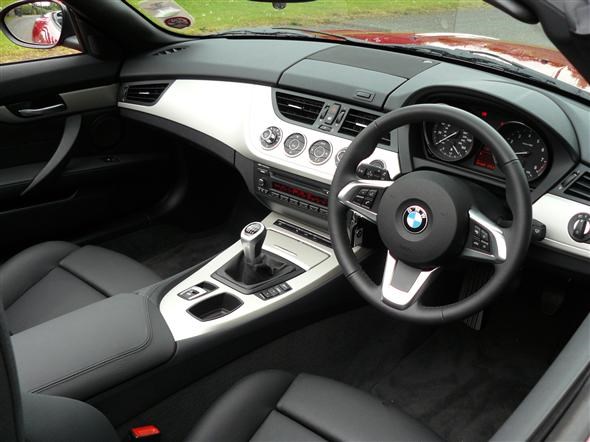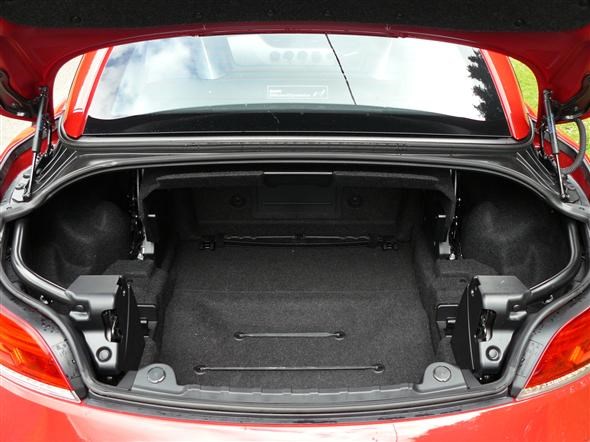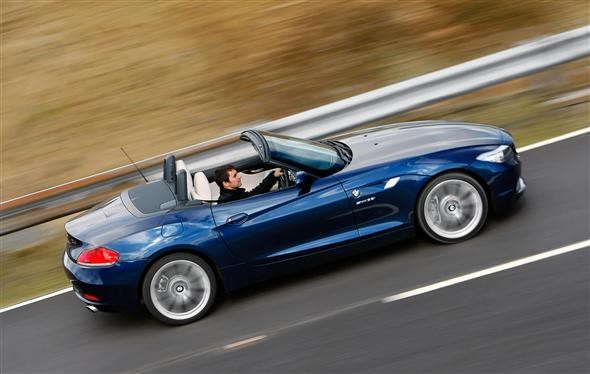A BMW Z4 might not be your obvious company car choice but if you are looking for something a little more snazzy to burn up and down the UK’s motorways in then it’s not as outlandish an idea as you might have thought.
And, with the introduction of the new low-emitting, fuel-efficient 2.0-litre turbocharged four-cyclinder engine you might even consider it ideal for the job.
The Z4 line-up has undergone a change: gone are the six-cylinder sDrive 23i (2.5-litre) and 30i (3.0-litre) models and instead you can get the sDrive 20i and 28i variants that are both powered by a 2.0-litre engine.
It’s all part of BMW’s economy drive, if you like. With the four-cylinder units you can now have your cake and eat it. With better fuel economy and lower emissions, you might reasonably expect a reduction in performance. That’s not the case for the 20i, which is 0.3s quicker to 62mph – at 6.9s – although the 28i is just 0.2s slower than the 30i over the benchmark sprint getting there in 5.7s. Top speed for the 20i is 146mph, while the 28i’s is limited to 155mph. However, power has been compromised: the 20i is 20bhp down and the 28i is 13bhp down.
With the introduction of the new turbocharged engine though you do get a much heartier slab of low-down pull. Maximum torque is up by 20Nm on the 20i and a staggering 40Nm on the 28i. Even more impressive is the improvement on fuel economy and CO2 emissions. Both cars emit 42g/km less than the models they are replacing with CO2 emissions of 157g/km.
So that’s all the stats and facts, which do make encouraging reading for the company car driver. But how does that translate when you get behind the wheel?
Well, both the 20i and 28i are fantastic to drive. They have lost none of the purpose that was so inherent in the 23i and 30i. Great acceleration, fantastic cornering abilities, a surprisingly complaint ride and an invigorating engine noise when you put your foot down are still hallmarks of this very capable car.
So, with no real compromises in the driving department, the only real decision that faces you if you have your heart set on a Z4 is which one to choose.
Right, let’s say it how it is. Go for the 28i.
There’s a good reason. Yes, on paper it is about £4,000 more (the standard 20i P11d value is £29,260 while P11d value of the standard 28i is £33,425) but the 28i pumps out a total power output of 245bhp and that makes a real difference when you want to accelerate away quickly. The 184bhp 20i, although far from sluggish, just doesn’t quite have enough punch to make the experience wholly satisfying. The 20i is no slouch, but when you are driving enthusiastically you do feel you need a bit more under your right foot, which, when you have chosen a car like this, is what you should expect. It’s just a little short of the mark.
And there’s no difference in running costs. Average fuel consumption for both cars is 42.2mpg, and as a result of the low CO2 emissions the Benefit-in-Kind tax rate is 21% – very affordable for this type of car.
So, if you are looking for something sporty as your company carriage, the new Z4 four-cylinders are a surprisingly sensible buy and, if you have the choice, the 28i should be at the top of your list.


Also consider:
Nissan 370Z Roadster
Brutal, fast, expensive to run, but a lot of fun
Porsche Boxster
Almost a default choice for anyone looking for an open-top with superior handling qualities
Mercedes-Benz SLK
Moderately sedate in terms of handling, but a good solid option. Might want to wait for the diesel next year





